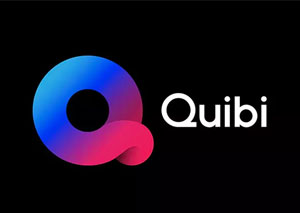
Like many people in the industry I wasn’t surprised to see Jeffrey Katzenberg’s Quibi shut down last week after rapidly blowing through $1.8 billion in start-up financing.
The business model had so many flaws it was just a matter of when it would implode, rather than if. A staff member reminded me that I predicted at Quibi’s launch that they wouldn’t last six months; they made it to seven, so I was out by a month. However, predictions are not important. What is important is looking at the reasons for the failure and what can be learned from it.
I think Quibi’s story provides some very important and timely lessons for Canadian media companies, our regulators and our Government. This is particularly true in light of the fact that Canada is sorely lacking in leadership from our largest media groups as the industry rapidly shifts from traditional broadcast to streaming platforms.
So, why did Quibi fail and what can be learned from that failure? In my opinion, it had nothing to do with Covid-19 as Jeffrey Katzenberg claims. In fact, Quibi probably launched at an excellent time, as the pandemic restrictions fueled streaming services throughout the spring and summer. Netflix saw its share price jump 70%. Mobile video viewing jumped 60% over that period, and every service from the new AVODs to established SVODs – even small ones like ours at OUTtv – saw a rapid increase in subscriptions; all except Quibi.
 Katzenberg blaming Covid-19 for Quibi’s failure certainly gives credence to the widespread belief that their biggest flaw was the hubris of their management and their belief that it couldn’t possibly fail. More specifically, it was clear to everyone in the business (except perhaps to Quibi’s management) that the business model of a subscription priced at $4.99 that also included advertising was going to be a problem, especially when targeting younger audiences who were already getting their video fix for free on Facebook, Instagram, YouTube, TikTok and other social media platforms. Furthermore, the notion that Quibi would become primetime viewing for consumers while they rode the bus or were standing in line for coffee, as Meg Whitman explained, was always fanciful. In the end, Quibi was just another solution looking for a non-existent problem. Clearly, they were trapped by their revenue projections and then buried by their inability to justify their content expenditures.
Katzenberg blaming Covid-19 for Quibi’s failure certainly gives credence to the widespread belief that their biggest flaw was the hubris of their management and their belief that it couldn’t possibly fail. More specifically, it was clear to everyone in the business (except perhaps to Quibi’s management) that the business model of a subscription priced at $4.99 that also included advertising was going to be a problem, especially when targeting younger audiences who were already getting their video fix for free on Facebook, Instagram, YouTube, TikTok and other social media platforms. Furthermore, the notion that Quibi would become primetime viewing for consumers while they rode the bus or were standing in line for coffee, as Meg Whitman explained, was always fanciful. In the end, Quibi was just another solution looking for a non-existent problem. Clearly, they were trapped by their revenue projections and then buried by their inability to justify their content expenditures.
A more valuable lesson is to understand how Katzenberg and Whitman violated one of the core principles of start-up culture, which is to build a minimum viable product (“MVP”) before scaling a business up. As a lean startup, the concept of creating an MVP is fundamental to Silicon Valley culture and is used as a model around the world. Starting small as you build the MVP is cost effective and buys management more time to figure things out, adapt and pivot to a workable model. Once the MVP is validated then the business can begin to scale. Katzenberg’s mistake was starting Quibi at too high a scale prior to working out the MVP. The pricing model was flawed, as was the distribution strategy. However, there was no time or money left to fix it because all bets were placed on the initial launch model.
This is in stark contrast to all of the successful start-ups of the streaming era. Netflix famously made several mistakes in the early days, including a name change and a poor pricing decision. AVOD streaming services such as PlutoTV and Tubi both started with very small seed capital and built their businesses from there. They both learned how to build free advertising- supported content platforms before they were acquired by a studio.
Smaller content platforms like Acorn, Shudder, and Crunchyroll, along with Canadian services like Blue Ant’s Love Nature, Chris Knight’s Gusto and our own OUTtvGo, all began at the MVP stage and grew from the use of data and customer experience. Both distribution and content platforms learned the cardinal rules of the streaming world which are: (1) platforms take considerable time to build a customer base; and (2) success depends primarily on having a differentiated content offering matched with an appropriate pricing and business model.
 Even a studio platform like Disney+ was being worked on for years in advance. Then-Disney-CEO Bob Iger spent years adding to the content library with the acquisitions of Pixar, Marvel, LucasFilm and Fox Studios. Iger knew from their ownership stake in Hulu that he needed to bolster the offering to ensure he had an MVP at launch. The point is that even the biggest players have spent years planning for their streaming platforms.
Even a studio platform like Disney+ was being worked on for years in advance. Then-Disney-CEO Bob Iger spent years adding to the content library with the acquisitions of Pixar, Marvel, LucasFilm and Fox Studios. Iger knew from their ownership stake in Hulu that he needed to bolster the offering to ensure he had an MVP at launch. The point is that even the biggest players have spent years planning for their streaming platforms.
The successful launch of Disney+ last November signaled the real beginning of the Streaming Wars. The other major studios soon joined Disney, with Comcast/NBC Universal launching Peacock, AT&T launching HBO Max and Viacom/CBS launching Paramount+. In each case the studios had been preparing for years for this shift as their concern grew that Netflix was building an unassailable advantage in the direct-to-consumer market. In addition, the two big technology giants, Amazon and Apple, accelerated their original content production and the development of aggregation platforms.
It is important to understand what this shift means. For the past decade, with the exception of Netflix and some niche services, the studios’ on-demand services were simply online extensions of the content they placed on the traditional broadcasting system. This meant that the traditional broadcasting system remained the superior consumer experience, as all original content was available through it on some channel or platform. All a consumer needed to do was to add Netflix as a stand-alone and they had everything they could want.
This is changing – very quickly. Instead of prioritizing the traditional broadcast system the studios are prioritizing their streaming platforms. We have already seen this in Canada, with Disney launching The Mandalorian and the musical Hamilton only on Disney+ – admittedly Covid accelerated this strategy but it was just a matter of time before it happened anyway. The other studios have taken a similar approach in the US. While all of them are behind Disney and Netflix in launching in Canada, they will be here eventually. Long-term, this will be the end of the traditional broadcasting bundle, as the current pricing model will not survive the loss of the premium content.
The implications for Canada are profound. Our large media companies depend heavily on the major U.S. studios for their premium content. Their ability to afford this content depends on their distribution strength in Canada. The arrival of the streaming services negatively impacts this in two important ways.
First of all, the arrival of the streaming services has accelerated cord cutting. This will continue to shrink the size of the traditional system thereby lowering the viewing audience and advertising dollars. Secondly, prices for content will continue to rise because of increased competition from the streaming services themselves. It is a far different world from the one where only Bell Media, Corus and Rogers were bidding on studio content for the Canadian market. Now the bidders also include the studios themselves along with Netflix, Apple and Amazon. While this process will still take years to fully play out, the overall result is now inevitable.
Another company that thinks streaming is the future is Britain’s ITV. This past week ITV re-arranged their management team to make streaming a priority, calling it the “new normal.” Of course, ITV has a streaming joint venture with BBC called BritBox, it now also includes content from other UK networks. It launched in the U.S. in 2017, Canada in 2018 and the UK in 2019. It’s due to launch in Australia in Q3 2020, with further expansion coming thereafter. It has reported having more than 1.5 million subscribers in the U.S. and Canada alone.
Where is Canada’s joint SVOD venture?
So, where is the Canadian version? Where is MapleBox, our consortium or joint venture? Based on the timelines of other SVODs, this service should have launched no later than 2018 or 2019 at the latest. For more than a decade, Canadian broadcasting policy has been about encouraging media concentration in order to increase the scale of our major players to that they could compete against foreign competition.
The CRTC’s belief that these companies would be our international distributors was clarified in the Let’s Talk TV decision in 2015. The Commission stated:
“Looking into the future of particular services and companies, the Commission expects that vertically integrated companies (companies that own or control programming services as well as distribution services), for their part, will continue to have the opportunity to leverage their resources and audience reach to acquire popular and lucrative programming as well as be well positioned to produce high-quality programming made by Canadians. Their critical mass provides these companies with the financial capital required to succeed both domestically and internationally.” [Broadcasting Regulatory Policy CRTC 2015-86, paragraph 12.]
 Canadian broadcasting policy aligned in favour of the Big Four (Bell, Shaw/Corus, Rogers and Quebecor), allowing them to control the distribution side of the business through their BDU affiliations, with few strings attached. The Performance Envelope Program of the Canada Media Fund was structured in such a way that the bulk of the available funds for private services were reliably delivered to the Big Four.
Canadian broadcasting policy aligned in favour of the Big Four (Bell, Shaw/Corus, Rogers and Quebecor), allowing them to control the distribution side of the business through their BDU affiliations, with few strings attached. The Performance Envelope Program of the Canada Media Fund was structured in such a way that the bulk of the available funds for private services were reliably delivered to the Big Four.
All of the market advantages were tilted in favour of the VIs over the independent sector. This includes everything from access to set-top-box data to the elimination of such conditions of license as genre protection and ‘must carry’ status for many Independents: access that had been the pre-condition to vertical integration and that had allowed independents to compete. The belief that the Big Four would save Canadian broadcasting appears to have been so strong that it was internalized throughout the industry and the Government. However, whatever promises or premises this belief was based on were obviously wrong.
Even if the premises were right the logical policy would have been to strengthen the Independent sector within Canada forcing the Big Four to grow their content businesses internationally. Instead, policies have weakened the Independents by removing access rights and genre protection and watering down linkage rules, making it easy for the Big Four to increase profitability inside the Canadian market where they control distribution. As a result, the situation is backwards with the smaller independents such as Blue Ant, Pelmorex, Stingray and OUTtv receiving less support domestically, but leading the way in innovation and exports.
Instead of leading the way for Canadian exports, Shaw Communications sold their broadcasting assets to Corus in 2016 and its economic interest in Corus in 2019. Since becoming a “pure play content company”, as Corus describes itself, it has shown no urgency in regard to expanding as a platform outside of Canada. Rogers ended its partnership with Vice in 2018 and has shown no interest in expanding their interests since then either.
In English Canada this leaves Bell Media, who have continued to develop Crave as a premium SVOD service, but have focused their energies within Canada only. Their “boldest” recent move is the acquisition of the Group V linear services in Quebec in 2020 in order to expand service to French-speaking audiences in Quebec. Quebecor appears to be making some moves in the right direction but they have also been underwhelming.
The Big Four’s content businesses still form less than 10% of their overall value. The core businesses of Internet and mobile are far more profitable and vastly less risky than the content business. Video content is now more of a loss leader to generate data use and to add to the stickiness of the services. International expansion of the Big Four would take them away from their core competitive advantages in Canada and into markets such as the U.S. that would put them head-to-head with their current suppliers and technology partners.
Whatever belief on which vertical integration was based, if it was intended to create international champions it now appears to have been a miscalculation.
In fact, it is perfectly rational that none of the Big Four have shown any interest in launching an international streaming service. Why would they want to enter a competitive market situation when they have just two or three competitors in their core businesses at home? Corus has launched their “Stack TV” bundle on Amazon and Apple+ channels but have still showed no signs of taking any of their content brands international. Are they just waiting for a federal Government who will let them sell out to foreign buyers?
 In the meantime, the Canadian industry is left in a terrible situation. In order to maintain quarterly profits, the Big Four continue to squeeze the independent broadcasters both on distribution and by pushing in on valuable relationships they don’t already control. This has turned the system into “Lord of Flies” as everything that can be cannibalized, will be. Acquiring foreign content and reducing original programming is the best way to maintain short-term profits, which has led to the commodification of content instead of developing it for export. Bell’s recent “misallocation” situation is simply a symptom of the overall systemic problem, which is that original programming is seen as cost of doing business and not a long- term business opportunity in and of itself.
In the meantime, the Canadian industry is left in a terrible situation. In order to maintain quarterly profits, the Big Four continue to squeeze the independent broadcasters both on distribution and by pushing in on valuable relationships they don’t already control. This has turned the system into “Lord of Flies” as everything that can be cannibalized, will be. Acquiring foreign content and reducing original programming is the best way to maintain short-term profits, which has led to the commodification of content instead of developing it for export. Bell’s recent “misallocation” situation is simply a symptom of the overall systemic problem, which is that original programming is seen as cost of doing business and not a long- term business opportunity in and of itself.
As the streaming wars heat up, Canada should be in an excellent position to take advantage of the global market due to our superb creative and production capabilities, but we are not. If our largest media groups fail to take up the challenge, then those that are prepared to do so need to be helped to take up the slack. Unfortunately, our independent sector has been so diminished over the past decade it is going to be difficult. The starting point is in recognizing that this is where we are. As the situation with Quibi has shown, innovations take time to build to scale and need long-term support.
Streaming evolving faster than regulation
Quibi also shows that the streaming eco-system is evolving much faster than our Legislative or Regulatory process. It is expected that the Government will soon bring forward changes to the Broadcasting Act. We can only hope that these changes begin to address the problems with current policy. We need to develop an industry wide strategy that prioritizes the development, production, distribution and export of original Canadian content instead of organizing around increasing the dominance of four companies who have shown no willingness to join the battle.
What is the final lesson of Quibi for the Government? If the Studio and Big Tech streaming platforms are charged a levy as has been signaled by the Government then the funds should be directed to a new fund, as recommended by the Yale Report (Recommendation 66) approved by the CRTC. This funding should support the development of Canadian streaming services and content for those services in Canada and internationally. The Government and the CRTC must act more quickly. Time gets shorter by the day. The streaming wars are here. Will Canada show up?




